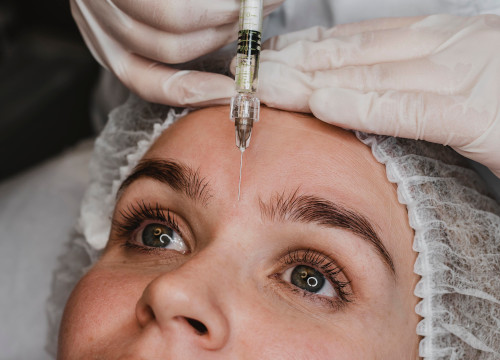Facial fillers, also know as dermal fillers, are substances injected beneath the skin to help smooth fine lines and boost facial volume. Also known as dermal fillers, these injections are in-office procedures that are minimally invasive alternatives to cosmetic surgery. Patients often undergo facial filler injections to achieve a more youthful appearance with as little down time as possible. Fillers are available to target nearly any area of the face, including crow’s feet, laugh lines, and thin lips.
that non-surgical cosmetic treatments like Restylane and Juvederm are the fastest growing form of aesthetic medical enhancements in the U.S.? The American Society of Plastic Surgeons reports that minimally invasive cosmetic procedures were up by 6 percent in 2012 over 2011 despite surgical procedures being down by 2 percent. More than 1.4 million dermal injections were administered to American patients in 2012 alone – up from 1.3 million in 2011.
You may be a candidate for dermal facial filling if you are unhappy with your facial volume or are looking for a non-surgical way of smoothing fine lines. Many types of facial injections are available; and our staff would be happy to help you find out which filler is right for you. Contact us today to schedule a consultation or find out more about dermal injections.

Deciding between dermal fillers and neuromodulators often depends on the type of wrinkles you’re looking to address. Neuromodulators are typically used for dynamic wrinkles that occur when facial muscles contract, causing lines to appear. These are often wrinkles that appear when you make facial expressions, like frown lines and crow’s feet.
On the other hand, facial fillers are better suited for static wrinkles, which are present even when your face is at rest and not making expressions. Static wrinkles are often caused by a loss of volume and collagen in the skin. They are typically found in areas like the nasolabial folds, marionette lines, and areas where volume has diminished.
So, if you’re dealing with wrinkles that are primarily due to muscle movement and expression, a neuromodulator might be the better choice. If your wrinkles are more related to volume loss and occur even when your face is at rest, then dermal fillers may be the right option. In some cases, a combination of both treatments can be recommended to address both dynamic and static wrinkles.
Getting a facial filler is as easy as dropping by our office on your lunch break. Using a very fine needle, your filler will be injected just beneath the surface of your skin. You will experience little or no discomfort and can return to work immediately after the procedure.
Results vary from patient to patient and are never guaranteed. However, most patients begin to see visible results within just days of undergoing a dermal injection. Results may continue to improve over the course of several weeks. Depending on the location of your injection and the type of filler used, the effects of your filler may last as long as 6 months or more.
When it comes to dermal fillers, there isn’t a one-size-fits-all answer to the question of which is the best. The key to achieving optimal results lies in selecting the right filler for the specific purpose and area of treatment. Dermal fillers come in various formulations, each designed to address distinct concerns. Some fillers are ideal for deep injections to restore volume and structure, while others are better suited for more superficial injections to smooth fine lines and wrinkles. Furthermore, the choice of filler can vary based on the treatment area; for example, selecting a filler for the tear trough area requires a different consideration than choosing one for the nasolabial folds.
The key is to consult with a qualified and experienced healthcare provider who can assess your individual needs and recommend the most appropriate filler or fillers to achieve the desired results. Ultimately, the best dermal filler is the one that aligns with your specific goals and the unique characteristics of your skin.

Copyright © 2025 Dr. Yuan Cosmetic Surgery
Copyright © 2021 Sean Yuan, MD | Cosmetic Websites by O360® | Privacy Policy | Terms of Use | Disclaimer | Web Accessibility Statement